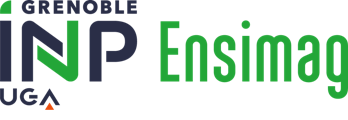Number of hours
- Lectures 15.0
- Projects -
- Tutorials -
- Internship -
- Laboratory works 18.0
- Written tests -
ECTS
ECTS 3.0
Goal(s)
3D Virtual Worlds are omnipresent in a wide range of applications, from entertainment and culture - special effects, 3D feature films, video games, reconstruction of cultural heritage for museums - to industrial applications such as the design of virtual prototypes or professional training through interactive simulators.
This course is an introduction to Computer Graphics: it presents the basic techniques to model 3D shapes, deform and animate them over time and to render them into images and movies of the corresponding 3D world. Applications to virtual characters and to natural scenes modeled at different level of details (LOD) will studied.
Throughout the course, students will be trained to OpenGL programming and work on a "case study" project, which will give them the opportunity to do some personal reading and combine the methods they have studied to create their own animated 3D scene.
Jean-Sebastien FRANCO
Content(s)
1. Rendering techniques. Projective rendering: graphic pipe-line, shading, textures and aliasing problems. Introduction to realistic rendering (ray-tracing).
2. Geometric modeling. Representation & creation of 3D shapes, deformation techniques.
3. Computer Animation. Kinematic and procedural methods, introduction to physically-based models through point-based physics & collision processing.
4. Case studies: layered models for characters and LODs for natural scenes.
Programming in Python and C
Session 1 (N1):
- E1: A two-hours written exam (1 A4 sheet of paper permitted for the exam; all other course material, and any electronic or communication device prohibited)
- P: 1 project assignment per group of 2 or 3 students
Session 2 (N2): the exam mark E1 will be replace by the mark of a new exam E2, which will be either written or oral depending on the number of concerned students. The documentary constraints are the same as for the session 1 exam. The project mark will remain unchanged.
N1 = 1/2 E1 + 1/2 P
N2 = 1/2 E2 + 1/2 P
- MCC en présentiel **
Note finale = 1/2 examen (E1 ou E2 selon la session) + 1/2 projet (P)
N1 = 1/2 E1 + 1/2 P
N2 = 1/2 E2 + 1/2 P
En cas de non validation N1, la note d'examen (E1) sera remplacée par un écrit de rattrapage (E2). La note de projet restera inchangée.
- MCC en présentiel **
- MCC en distanciel **
Note finale = projet (P)
N1 = P
N2 = 1/2 E2 + 1/2 P
En cas de non validation N1, un écrit de rattrapage sera organisé (E2). La note de projet restera inchangée.
- MCC en distanciel **
The course exists in the following branches:
- Curriculum - Information Systems Engineering - Semester 8
- Curriculum - Math. Modelling, Image & Simulation - Semester 8
Course ID : 4MMG3D6
Course language(s): 
The course is attached to the following structures:
You can find this course among all other courses.
- J. D. Foley and A. van Dam and Steven K. Feiner and John F. Hughes
Fundamentals of Interactive Computer Graphics
Addison-Wesley Publishing Company, 1990.
- E. Angel
Interactive Computer Graphics: A Top Down Approach with OpenGL,
Addison-Wesley Publishing Company, 2003.



